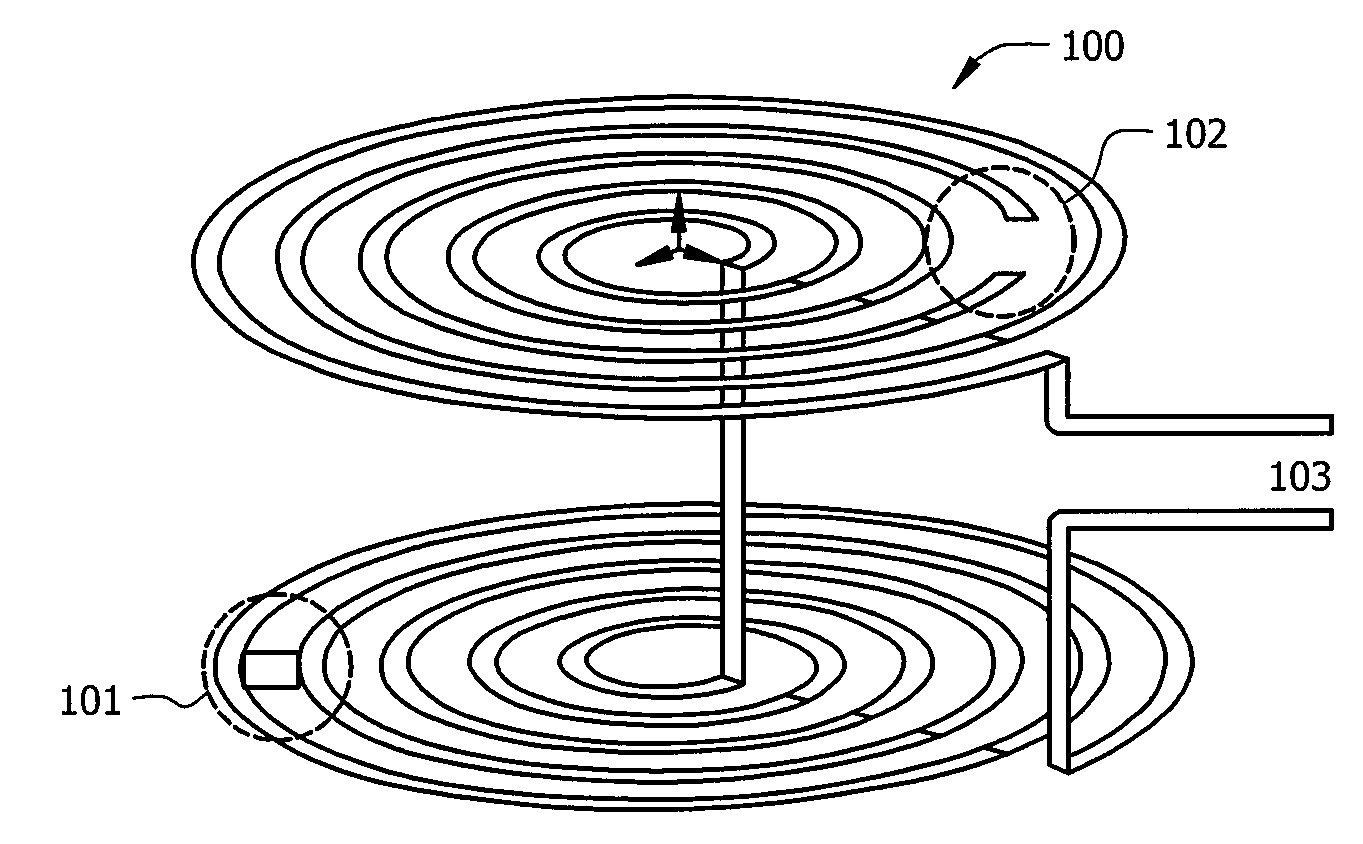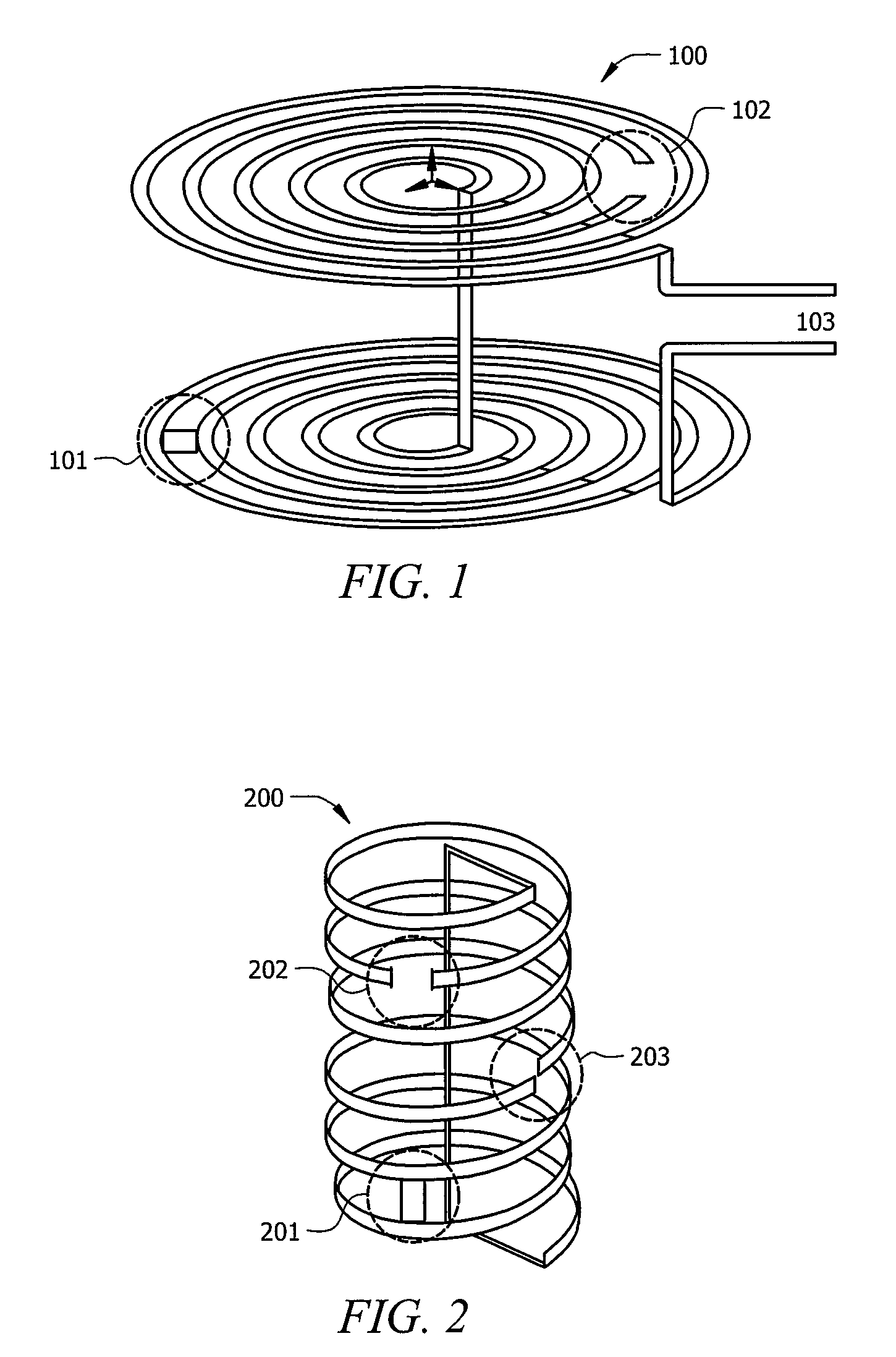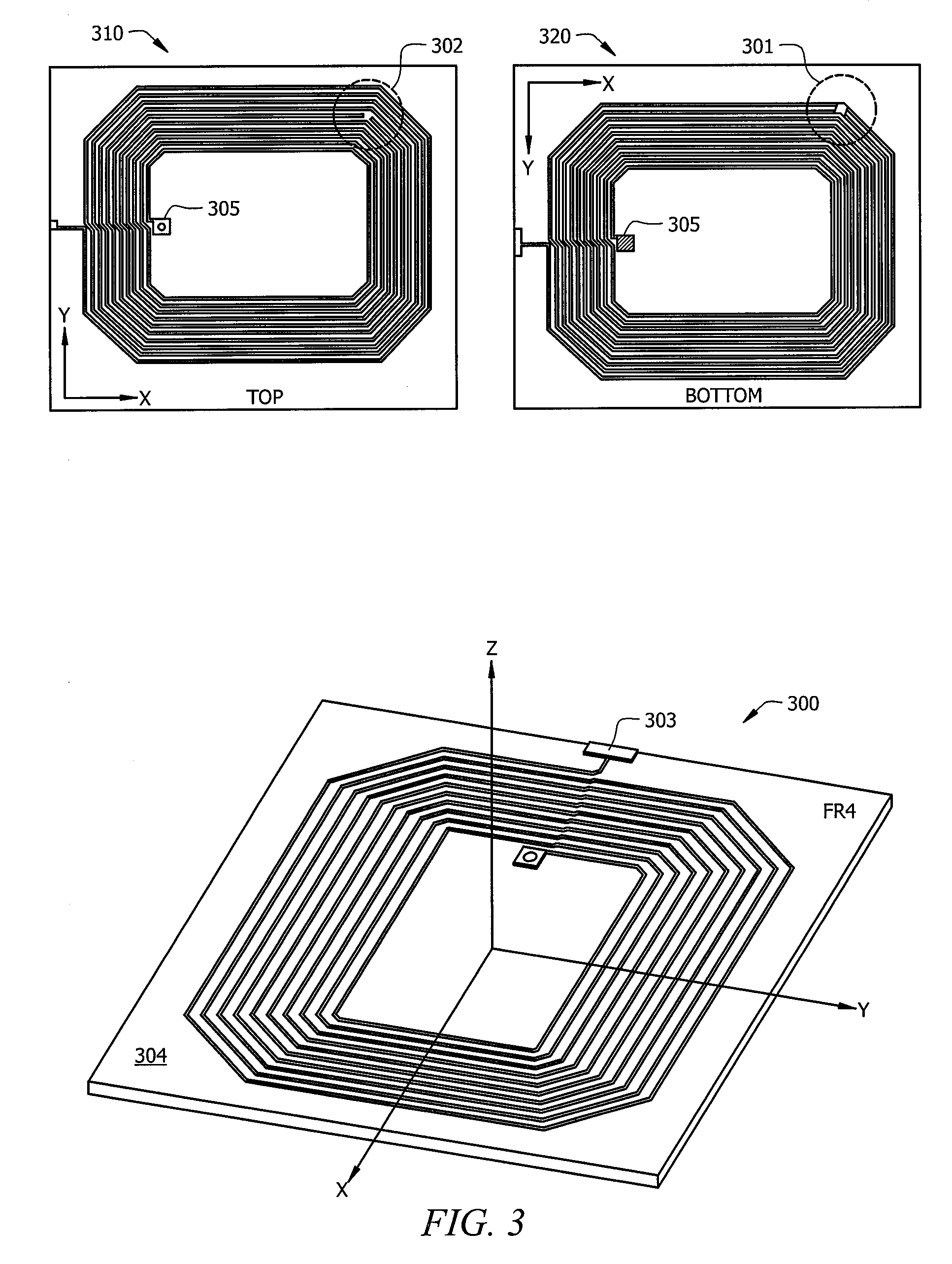Miniature and Multi-Band RF Coil Design
- Summary
- Abstract
- Description
- Claims
- Application Information
AI Technical Summary
Benefits of technology
Problems solved by technology
Method used
Image
Examples
Embodiment Construction
[0025]FIG. 1 is an illustration of exemplary RF coil 100 adapted according to one embodiment of the invention. RF coil 100 includes shorting bridge 101 and gap 102, which together affect the frequency performance of RF coil 100 as well as provide impedance matching at input / output port 103.
[0026]The scope of embodiments is not limited to the double-layer spiral type coil shown in FIG. 1. Embodiments of the invention can be adapted for use in any shape or type of RF coil, such as coils that include any number of layers, any number of turns, any sense of rotation in the turns, etc. For instance, FIG. 2 is an illustration of exemplary RF coil 200, adapted according to one embodiment of the invention. RF coil 200 is a helical type coil that includes shorting bridge 201 and gap 202 to provide impedance matching at input / output port 203 and frequency shifting.
[0027]Nor is the scope of embodiments limited to coils that have both a gap and a shorting bridge, as some embodiments include eith...
PUM
| Property | Measurement | Unit |
|---|---|---|
| Flexibility | aaaaa | aaaaa |
| Current | aaaaa | aaaaa |
| Frequency | aaaaa | aaaaa |
Abstract
Description
Claims
Application Information
 Login to View More
Login to View More - R&D
- Intellectual Property
- Life Sciences
- Materials
- Tech Scout
- Unparalleled Data Quality
- Higher Quality Content
- 60% Fewer Hallucinations
Browse by: Latest US Patents, China's latest patents, Technical Efficacy Thesaurus, Application Domain, Technology Topic, Popular Technical Reports.
© 2025 PatSnap. All rights reserved.Legal|Privacy policy|Modern Slavery Act Transparency Statement|Sitemap|About US| Contact US: help@patsnap.com



